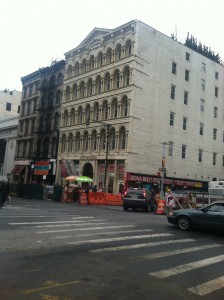Bryant Park is one of the larger privately owned and run parks in Manhattan. It is located in Midtown Manhattan at 40th St., between 5th and 6th Avenue. Management of the park is provided by the Bryant Park Corporation, found by park president Dan Biederman. It is a non-profit organization. The establishment of the park as a public gathering space began during the 1970’s. At the time, Bryant Park was known as a symbol of the Decline of New York, as gangsters and other unsavory people would be known to gather here. Dan Biederman sought to invoke the Broken Window Theory, cleaning up the park to encourage street goer’s to visit once more and discouraging unsavory characters from reappearing.
It was a huge success, as present day Bryant Park could attest to. The park is frequently visited by civilians and tourists alike. One of the main attractions of the park would be the huge lawn in the center of the park which people are encouraged to sit down for relaxation and lunch breaks. The park is also famous for its various events and amenities that constantly changes depending on the season and year. Recently, Bryant Park overlaid the lawn with a large ice skating rink during the winter season of 2013. It was dismantled a few months back in February – March and the reputable lawn was open once again.
Connected to Bryant Park is the New York Public Library, of Ghostbusters fame. It is located on the East side behind Bryant Park on 5th Avenue. The library is in a joint partnership with the Bryant Park Corporation. A majority of the library’s storage is stored within an underground building under Bryant Park. Even though it is connected to the park and part of its building is under Bryant Park’s property, Bryant Park does not have any jurisdictions of any form to alter the library’s exterior or its associated properties.




